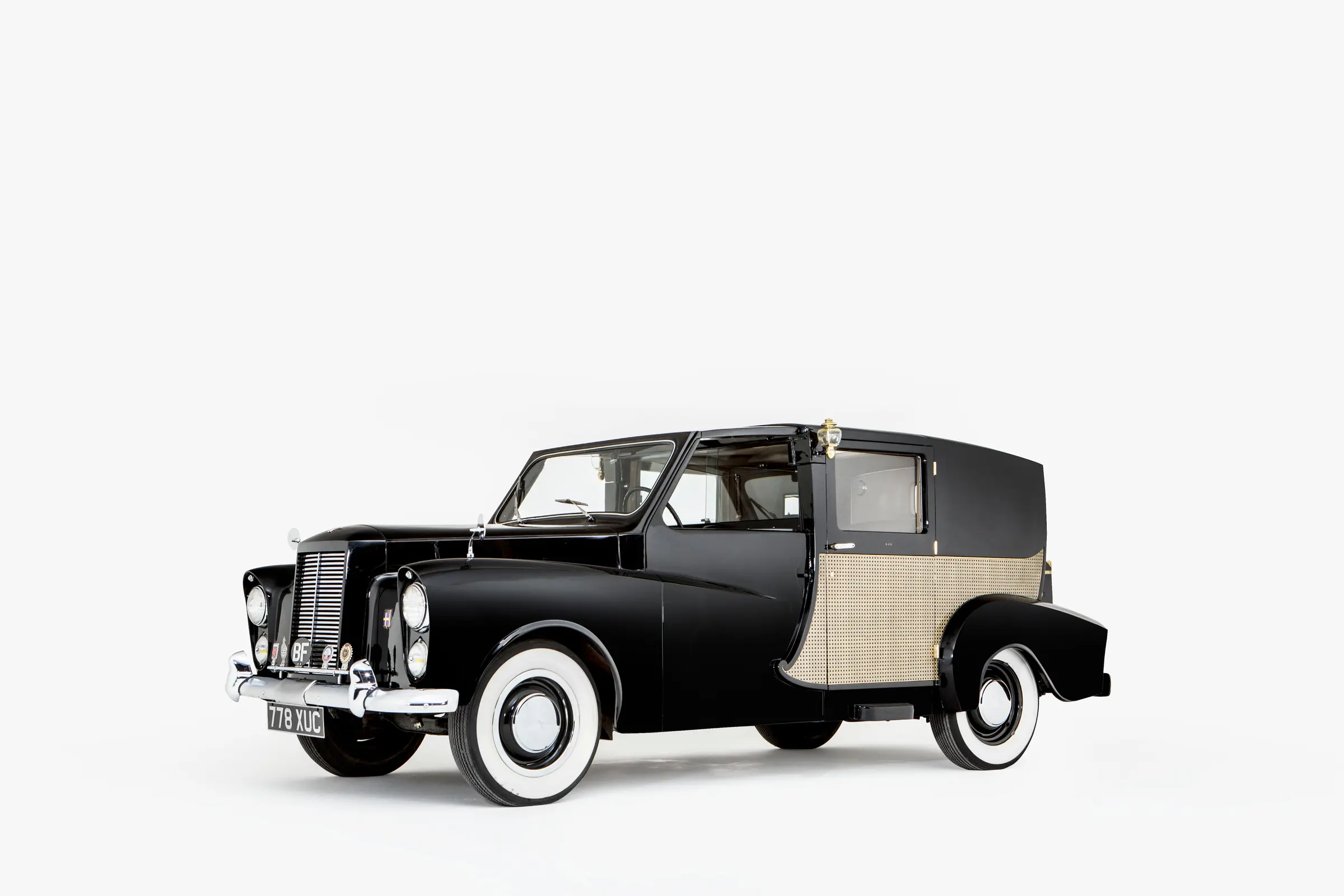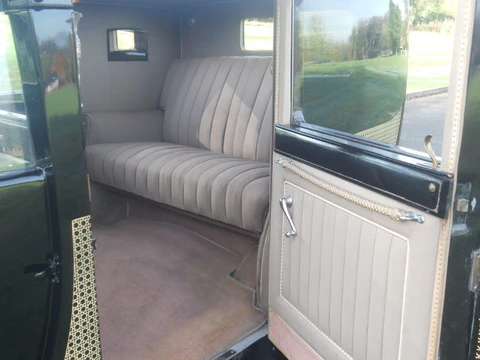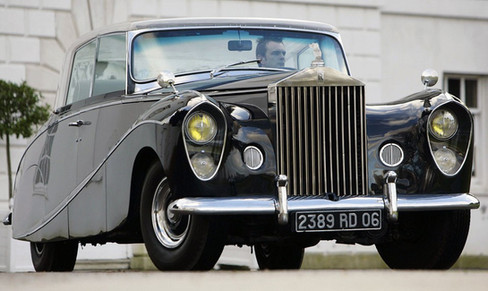Nubar Gulbenkian: The Orchid Wearing Playboy Millionaire Who Lived Life Entirely on His Own Terms
- Daniel Holland
- 3 hours ago
- 9 min read

If you had walked along the boulevards of Cannes or the sun soaked promenades of the Cote d Azur in the mid twentieth century, you might have encountered a sight that would make you wonder whether you had stepped into a comic novel. This was Nubar Sarkis Gulbenkian, gliding past in a white suit and a vast sombrero, a monocle perched in one eye, a Havana cigar in his hand, and a fresh orchid pinned to his lapel. At the wheel of his customised gold plated London taxi, he cut the sort of figure you could sketch from memory after a single glance.
“I believe in comfort. I enjoy myself. I enjoy life. I enjoy everything I do,” he once declared. It was not a slogan. It was a creed.
Born into immense wealth, son of one of the most powerful oil financiers of the age, he spent his life turning money into theatre. He was a bon vivant, a self styled epicure, an MI9 courier during the Second World War, a man who dyed orchids by hand, who terrified stockbrokers, seduced chorus girls, sued the BBC for two pounds, and imported belly dancers from Turkey to perform for half an hour at a party. Few millionaires enjoyed life with the same sense of performance.

From Persecution to Privilege: The Suitcase Baby
Nubar was born in Kadikoy in 1896, on the Asian side of the Bosphorus, just as the Hamidian massacres of Armenians were unfolding. His family fled when he was only weeks old. The family legend claimed that the infant was carried to safety in a suitcase. Whether embroidered or literal, the image suited the dramatic arc of his life.
His father, Calouste Sarkis Gulbenkian, was already wealthy and rising rapidly. By the early 1900s he was positioning himself as a key player in the oil markets of the Middle East. The family settled into a cosmopolitan rotation of homes in London, Paris, and the Riviera, surrounded by staff, tutors, and art collectors. Nubar’s education was meticulously engineered. His father insisted he learn French and German fluently. “He was indecently thorough in such matters,” Nubar later wrote.
He was sent to Harrow, then to Trinity College, Cambridge, with a period of study at Bonn University. In 1917 he was admitted to the Middle Temple, though he never became a barrister. With his schooling split between elite English institutions and continental classical training, he fashioned himself as an English gentleman, complete with the mannerisms and wardrobe to match.
Even as a young man he stood out. One friend at Cambridge, George Ansley, summed him up with the immortal line: “Nubar is so tough that every day he tires out three stockbrokers, three horses and three women.”

War, Neutral Passports, and the Pat O Leary Line
During the Second World War, Nubar’s life took an unexpected detour into espionage. When Germany invaded France in 1940, he was living in what would become Vichy territory. Rather than flee immediately, he chose to help.
From July to October 1940 he worked with MI9, the British intelligence branch responsible for assisting Allied soldiers trapped behind enemy lines. Alongside Ian Garrow, he helped lay the groundwork for an escape network that guided soldiers across the Pyrenees into neutral Spain. This became known later as the Pat O Leary Line, named after Albert Marie Guerisse, who took over after Garrow’s arrest.
Nubar’s Iranian citizenship was vital. Neutral status let him move between occupied France and Spain with relative ease, carrying messages and intelligence to British officers in Gibraltar. It was a quieter, more shadowy chapter in a life otherwise devoted to exuberance.
A Titan’s Son: Wealth, Friction, and the Price of Chicken
Being the son of Calouste Gulbenkian was not simple. The elder Gulbenkian was legendary for his parsimony. Nicknamed “Mr Five Per Cent” for his share of Middle Eastern petroleum profits, Calouste amassed one of the world’s most impressive private art collections and built a fortune stretching into the hundreds of millions.
Yet despite his wealth, he controlled Nubar’s allowance tightly, treating him almost like a reckless schoolboy rather than an adult. Nubar worked for him without salary. Their arguments usually revolved around money.
The most famous dispute began with a lunch.
In 1938, Nubar charged $2.22 to petty cash for a meal of chicken in tarragon jelly with asparagus tips. His father reprimanded him for the extravagance. Outraged, Nubar sued him for ten million dollars to claim what he felt was his rightful share of company profits. The matter dragged until it was eventually settled out of court, with Calouste forced to pay eighty six thousand dollars in legal fees.
“That was surely the most expensive chicken in history,” Nubar said.
By the time Calouste died in 1955, he had left $420 million to the Calouste Gulbenkian Foundation in Portugal. Nubar ultimately inherited two and a half million dollars plus additional settlements, far less than he had once expected. But he made up the difference with his own oil investments and financial acumen. “All of it I could possibly desire,” he said.
“I Prefer Everything”
One of the hallmarks of Nubar’s personality was his refusal to choose between pleasures. He liked fine suits and horses, city life and country life, young women and old brandy, London and Cannes. Asked which he preferred, he stroked his beard and answered simply: “I prefer everything.”

This approach governed his life. He wore orchids daily, shipped from around the world. Even in desert regions he insisted on a fresh bloom. He imported belly dancers from Turkey for fifty thousand dollars to perform for half an hour at a London party. His airlines, motorcars, cigars, wines, and tailors were chosen with almost ceremonial precision.
He coined the word “pantaraxia”, meaning “keeping people on their toes”, which he jokingly described as his primary hobby.
“I believe in comfort,” he liked to say. “I enjoy myself.”
The Monocle, the Beard, and the Famous Orchid
Gulbenkian became instantly recognisable in London high society. With his Savile Row suits, monocle, heavy beard, and flawless attention to dress codes, he embodied a stylised Edwardian masculinity. He once instructed a younger man: “In England a man cannot be seen around horses without his gloves and hat. One never wears a grey bowler unless he is with horses. It would not do. It would shock people’s feelings.”
His signature was the orchid in his lapel. He began wearing them in the 1920s. The only times he omitted one, he claimed, were when in France, on French ships or planes, or at the French Embassy. On those occasions he wore the insignia of the Legion of Honor, out of respect for the country that awarded it to him.
He told a tall tale that his deep blue orchids for Harrow Eton matches were hand carried out of the Himalayas “by yak caravan”. When a paper printed this as fact, he set the record straight: the blue was achieved by dipping a white orchid into a mixture of Stephen’s Ink and water. “I have got the mixture virtually right by now,” he said.
The Gold Plated Taxi
Perhaps his most famous possession was his customised London taxi. He had two Austin FX4 cabs converted, one equipped with a Rolls Royce engine and trimmed in gold plate. “It turns on a sixpence,” he quipped, “whatever that is.”
The passenger compartment was remodelled in the style of a Victorian Hackney carriage. Decades later, one taxi sold for £23,000, its eccentric appeal still intact.
Alongside his famous gold plated London taxi, Nubar Gulbenkian owned another car that perfectly expressed his theatrical personality: a radically customised Rolls Royce Silver Wraith, often referred to by enthusiasts as his “Honeymoon Express”.
Coachbuilt by H. J. Mulliner in the early 1950s, the car was unmistakable from any angle. Its sweeping chrome spats, exaggerated tail, and the distinctive Perspex roof gave it a silhouette unlike any other Rolls Royce of its generation. It glided more than it drove, and its appearance alone made it a conversation piece at every hotel entrance from London to Cannes.
The rear cabin was designed with the intimacy of a first class railway carriage. Plush seats, deep carpets, and a wraparound visibility from the clear roof made it a place to lounge rather than merely travel. Gulbenkian enjoyed being seen in it just as much as he enjoyed riding in it, and the car quickly became a part of his social identity. Photographs from the period show it parked outside grand houses and Riviera hotels, gleaming like a piece of jewellery.
This Rolls Royce was not merely transport. It was, like the gold plated taxi, an extension of Gulbenkian’s personality: stylish, eccentric, unmistakable, and proudly indifferent to fashion. When asked once why he enjoyed custom cars so much, he replied in characteristic style that he wanted “something different from all the others”, something that did not bore him. The Silver Wraith achieved exactly that. Today it remains one of the most recognisable one off Rolls Royces in the world.
A Gourmet of Legendary Dedication
For Nubar, eating was not a bodily requirement but an art form.
“Gastronomy is an art as difficult to master as music or painting,” he declared. “And, for me, much more rewarding.”
He delighted in planning menus with chefs, discussing each dish in detail. Beethoven moved him less than a finely planned dinner.

During one lawsuit against the BBC in 1962, he feared the High Court hearing would be tiresome. He therefore ordered what he considered a simple picnic lunch: barquettes de mousse imperial (ham laced with port), langouste Parisienne (crayfish with truffles), cote d agneau en aspic (lamb cutlets in aspic), strawberries, cheese, and coffee. It was prepared by the staff of the Caprice restaurant and eaten with fingers.
He sued the BBC because they failed to give him a promised recording of his appearance on Face to Face, in which he criticised the trustees of his father’s foundation. He won two pounds in damages but never cashed the cheque. Instead he had it framed over his fireplace.
Women, Wives, and “Marital Follies”
Nubar approached romance with the same energy he applied to everything else. He chased chorus girls in his youth and moved through European society as a self proclaimed ladies’ man.

But he also married three times and spoke about his failings with unusual honesty.
“I’ve had good wives, as wives go,” he said. “And as wives go, two of them went.”
His first wife, Herminia Fejo, married him in 1922. In his memoir he admitted mistreating her.
His second marriage, to Dora Freeland in 1928, also ended through his own infidelity. “It was entirely my fault,” he wrote. “Being younger and more virile than I am now, I succumbed to other charms,” referring discreetly to a woman he called Diana.
His third marriage came after a fourteen year courtship of Marie Berthe Edmée de Ayala, daughter of a French champagne magnate. Married in 1948, she once said, “Of course he is a very difficult man to live with, but it is worthwhile. Heaven forbid that I should have married a mollusk.”
He had no children.
He had fun with the symbolism of his marital history. His wife’s Rolls Royce bore the registration NSG 3, signifying she was his third wife. His own car bore NSG 2, signalling he was her second husband.
Homes Fit for a Character
In London, Gulbenkian lived at Arlington House, near the Ritz, in a flat furnished by the same building’s restaurant staff. His country home at Hoggeston, near Bletchley, was a former rectory spacious enough for 200 guests at cocktail parties.
In later years he lived at the Domaine des Colles in Valbonne, near Grasse on the French Riviera. It was here, surrounded by gardens, orchids, and an ever changing stream of guests, that he spent his later life while confined to a wheelchair after heart attacks beginning in 1968.
Even in ill health, he remained a fixture of Riviera social life, wearing enormous sombreros and white suits, greeting friends with the same mischievous energy that had carried him through seventy years of indulgence.

The Final Years and the Continuing Controversy
Nubar Gulbenkian died on 10 January 1972 at the English Hospital in Cannes, aged seventy five. His passing did not end the legal complexity that surrounded his father’s estate. Calouste Gulbenkian’s famously vague will had suggested that anyone employed by or hosting Nubar might be entitled to money. This produced one of the most intricate trust cases of the twentieth century: Re Gulbenkian’s Settlements, which reached the House of Lords in 1970.
Even in death, Nubar caused ripples.
A Life Lived with Zest
For his many flaws, excesses, and eccentricities, Nubar Gulbenkian lived with a clarity that few achieve. “If something is too much of a bore to do thoroughly and with zest,” he liked to say, “then don’t bother to do it at all.”
He believed in pleasure, in curiosity, in good food, in elegance, in mischief, and in living theatrically. It made him a man who seemed partly real, partly imagined, a figure from a more colourful age.
His father built an empire. But Nubar built a legend.














































